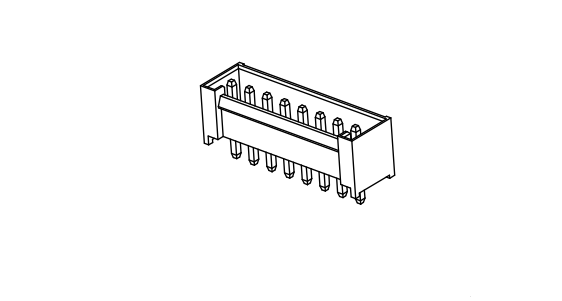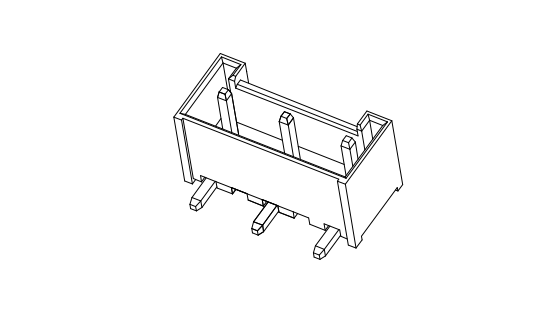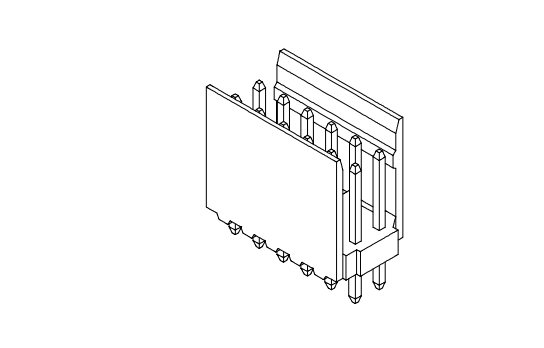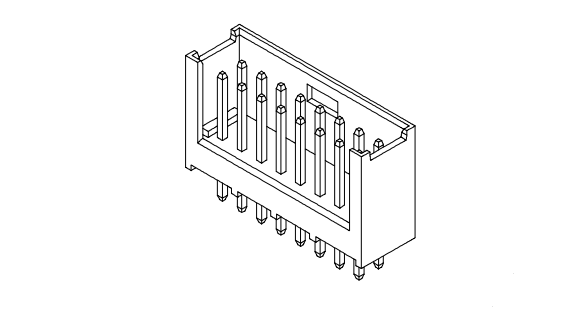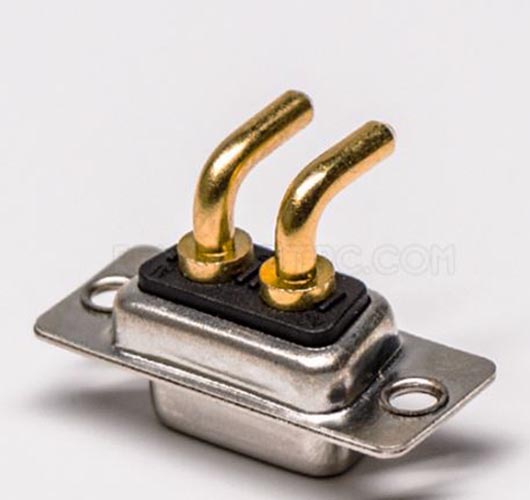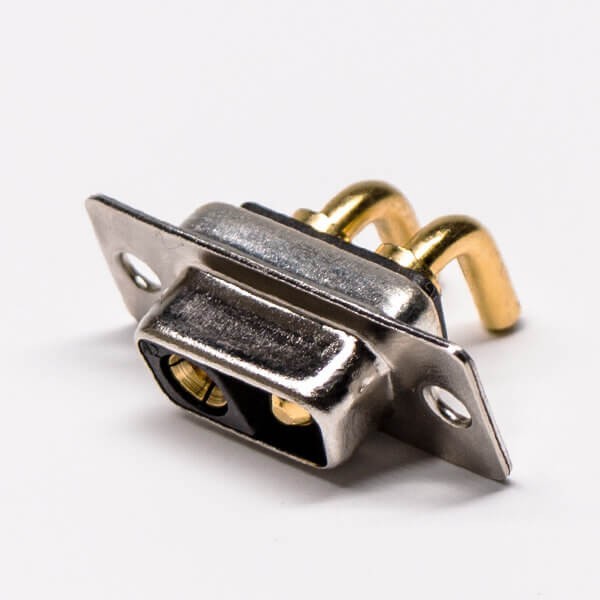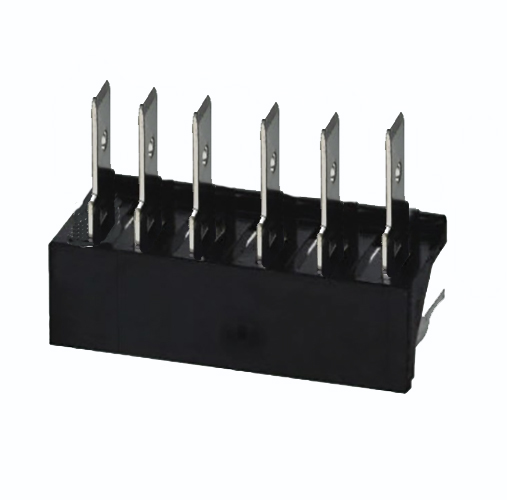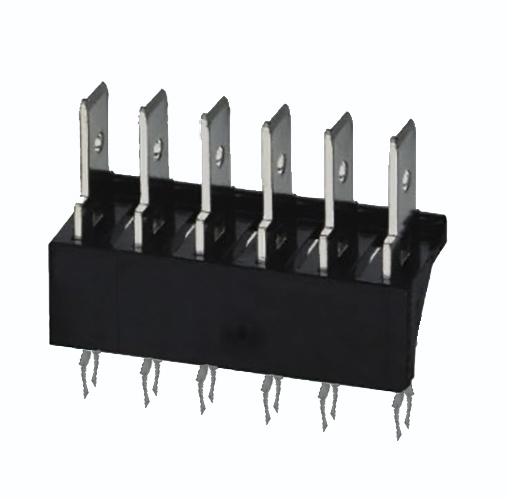In conclusion, IDC D-Sub Connectors are available in various sizes, with a typical range of 9 to 50 pins. The current and voltage ratings depend on the specific model, wire gauge, and contact material. It is recommended to consult the manufacturer's specifications to determine the exact current and voltage ratings for a particular IDC D-Sub Connector.
Yes, there are different socket types available for IDC D-Sub Connectors. The socket type refers to the arrangement and configuration of the socket contacts within the connector. Here is a detailed introduction to the different socket types in IDC D-Sub Connectors:
Standard Socket: This is the most commonly used socket type in IDC D-Sub Connectors. It features a rectangular-shaped socket with a row of contacts on each side. The contacts are arranged in a staggered pattern, with the contacts on one side slightly offset from those on the other side. This allows for a higher density of contacts within the connector.
High-Density Socket: For applications requiring a higher pin count in a smaller form factor, high-density sockets are available. These sockets feature a more compact design with a higher number of contacts compared to standard sockets. The contacts are arranged in a tighter grid pattern, allowing for a greater number of pins within the same size connector.
Mixed Layout Socket: In certain applications, there may be a need to combine different types of signals or power within the same connector. Mixed layout sockets are designed to accommodate both power and signal contacts within the same connector body. They typically have a combination of larger power contacts and smaller signal contacts, arranged in separate rows or sections within the connector.
Filtered Socket: In environments where electromagnetic interference (EMI) or radio frequency interference (RFI) is a concern, filtered sockets can be used. These sockets feature integrated EMI/RFI filters that help to minimize the effect of unwanted noise or interference on the signals being transmitted. The filters are typically integrated within the socket contacts or within a separate housing within the connector.
High-Temperature Socket: For applications requiring operation in high-temperature environments, high-temperature sockets are available. These sockets are designed with special materials and construction techniques that allow them to withstand elevated temperatures without degradation. They are commonly used in industrial, aerospace, and automotive applications where extreme temperature conditions are encountered.
It is important to note that the availability of different socket types may vary depending on the manufacturer and specific product series. Therefore, it is recommended to consult the manufacturer's catalog or website to determine the specific socket types available for a particular IDC D-Sub Connector.
In conclusion, IDC D-Sub Connectors offer a range of socket types to choose from, including standard, high-density, mixed layout, filtered, and high-temperature sockets. Each socket type is designed to meet different application requirements and provides specific features and functionalities to ensure reliable and efficient connectivity.
3.Main purposes and application areas IDC D-Sub Connectors are widely used in various industries and applications due to their versatility, reliability, and ease of use. Here is a detailed introduction to the main purposes and application areas of IDC D-Sub Connectors:
Computer and IT Industry: IDC D-Sub Connectors are extensively used in the computer and IT industry for connecting peripherals such as keyboards, mice, monitors, printers, and external storage devices. They provide a reliable and standardized interface for data and signal transmission.
Telecommunications: IDC D-Sub Connectors find applications in the telecommunications industry for connecting networking equipment, routers, switches, and modems. They enable the transmission of data, voice, and video signals in local area networks (LANs) and wide area networks (WANs).
Industrial Automation: IDC D-Sub Connectors are widely utilized in industrial automation systems for interconnecting control panels, programmable logic controllers (PLCs), sensors, actuators, and other devices. They provide a secure and robust connection for transmitting control signals and data in harsh industrial environments.
Automotive and Transportation: IDC D-Sub Connectors are used in the automotive industry for connecting various electrical components, including sensors, switches, motors, and ECUs (Electronic Control Units). They ensure reliable and efficient communication between different systems in vehicles.
Aerospace and Defense: IDC D-Sub Connectors are employed in aerospace and defense applications for their ruggedness and high reliability. They are used in avionics systems, military equipment, radar systems, and communication devices, providing a dependable interface for critical signal transmission.
Medical Equipment: IDC D-Sub Connectors find applications in medical equipment such as patient monitors, diagnostic devices, imaging equipment, and robotic systems. They offer a secure and standardized connection for transmitting vital signals and data in healthcare settings.
Test and Measurement: IDC D-Sub Connectors are utilized in test and measurement equipment for their accurate signal transmission capabilities. They are commonly used in oscilloscopes, spectrum analyzers, signal generators, and data acquisition systems.
Audio and Video: IDC D-Sub Connectors are used in the audio and video industry for connecting devices such as projectors, displays, audio mixers, and professional sound systems. They provide a reliable and standardized interface for transmitting audio and video signals.
Energy and Power Systems: IDC D-Sub Connectors find applications in energy and power systems, including renewable energy systems, power distribution equipment, and battery management systems. They enable the transmission of power and control signals in these critical applications.
In conclusion, IDC D-Sub Connectors are versatile and widely used in various industries and applications, including computer and IT, telecommunications, industrial automation, automotive, aerospace and defense, medical equipment, test and measurement, audio and video, and energy and power systems. They provide a reliable and standardized interface for signal transmission, ensuring efficient and dependable connectivity in diverse environments.
4. How durable and reliable is it? IDC D-Sub Connectors are known for their durability and reliability, making them widely used in various industries and applications. Here is a detailed introduction to their durability and reliability:
Robust Construction: IDC D-Sub Connectors are constructed with high-quality materials such as metal shells and durable plastic insulators. These materials provide excellent resistance to mechanical stress, impact, and environmental factors such as temperature, humidity, and dust. The connectors are designed to withstand tough conditions and ensure long-term reliability.
Secure Connection: IDC (Insulation Displacement Contact) technology is used in D-Sub Connectors, which ensures a reliable and secure electrical connection. The IDC contacts penetrate the insulation of the wires, creating a gas-tight connection that minimizes the risk of signal loss or intermittent connections. This technology also eliminates the need for soldering, reducing the risk of human error during installation.
High Signal Integrity: IDC D-Sub Connectors offer excellent signal integrity, ensuring accurate and stable transmission of data, power, and signals. The contacts are designed to minimize signal distortion and noise interference, resulting in reliable and high-quality connectivity. This makes them suitable for applications that require precise and consistent signal transmission, such as telecommunications, industrial automation, and test and measurement.
Longevity: IDC D-Sub Connectors are engineered to have a long lifespan, even in demanding environments. The connectors are designed to withstand thousands of mating cycles without compromising their electrical performance or mechanical integrity. This longevity ensures that the connectors can withstand frequent use and provide reliable connectivity over an extended period.
Quality Assurance: Reputable manufacturers of IDC D-Sub Connectors implement stringent quality control measures to ensure the reliability and durability of their products. These measures include extensive testing, compliance with industry standards and specifications, and certifications such as ISO 9001. By adhering to these quality standards, manufacturers demonstrate their commitment to delivering reliable and high-performance connectors.
Application-specific variants: IDC D-Sub Connectors are available in various configurations to meet specific application requirements. Different variants include high-temperature connectors for extreme environments, filtered connectors for EMI/RFI protection, and high-density connectors for space-constrained applications. These variants are designed to provide enhanced durability and reliability in their respective application areas.
In conclusion, IDC D-Sub Connectors are highly durable and reliable, thanks to their robust construction, secure connections, high signal integrity, longevity, quality assurance, and application-specific variants. These connectors offer a dependable solution for various industries and applications, ensuring uninterrupted and efficient connectivity.
5. How does it work? IDC D-Sub Connectors, also known as Insulation Displacement Contact D-Sub Connectors, are widely used in various industries for their reliable and efficient performance. Here is a detailed introduction on how IDC D-Sub Connectors work:
Connector Design:
IDC D-Sub Connectors consist of a metal shell or housing, plastic insulators, and a series of contacts. The metal shell provides mechanical strength and shielding, while the plastic insulators separate and insulate the contacts.
Insulation Displacement Contact (IDC) Technology:
The unique feature of IDC D-Sub Connectors is the use of IDC technology. This technology allows for easy and efficient termination of wires without the need for soldering. IDC contacts have sharp metal blades or teeth that penetrate the insulation of the wires when the connector is crimped or pressed. This displacement of insulation establishes a gas-tight electrical connection between the contact and the wire conductor.
Wire Termination:
To terminate a wire to an IDC D-Sub Connector, the wire is first stripped of its insulation. The stripped wire is then inserted into the designated slot or channel of the connector, with the conductor aligned with the IDC contact. A crimping tool or IDC insertion tool is used to apply pressure, forcing the IDC blade to penetrate the wire insulation and make contact with the conductor. The pressure applied by the tool also ensures a secure and reliable connection.
Contact Arrangement:
IDC D-Sub Connectors have multiple rows of contacts, typically arranged in a staggered pattern. The contacts on one row are slightly offset from those on the adjacent row, allowing for a higher density of contacts within the connector. Each contact is assigned a specific pin number or position, ensuring proper alignment and connection with the mating connector.
Mating and Locking:
IDC D-Sub Connectors are designed to mate with corresponding connectors or ports. The mating connectors have matching contacts and pin positions, allowing for proper electrical connection. Once mated, the connectors can be secured using screws or locking mechanisms, ensuring a secure and reliable connection that is resistant to accidental disconnection.
Signal Transmission:
IDC D-Sub Connectors are primarily used for data and signal transmission. The IDC contacts provide a reliable and low-resistance electrical connection, enabling the efficient transfer of data and signals between devices. The design of the contacts minimizes signal distortion and interference, ensuring high-quality and uninterrupted signal transmission.
In conclusion, IDC D-Sub Connectors work by utilizing IDC technology to establish a secure and reliable electrical connection between the contacts and the wires. Their design, wire termination process, contact arrangement, and mating mechanisms contribute to their efficient and reliable performance in various industries and applications.
6. How to install and use? Installing and using IDC D-Sub Connectors is a straightforward process that requires careful preparation and attention to detail. Here is a detailed guide on how to install and use IDC D-Sub Connectors:
Preparation:
Gather all the necessary materials, including the IDC D-Sub Connectors, wires, wire strippers, crimping tool or IDC insertion tool, and any additional components required for your specific application.
Familiarize yourself with the pinout and pin configuration of the IDC D-Sub Connectors to ensure proper alignment and connection.
Wire Stripping:
Strip the insulation from the end of the wires that will be connected to the IDC D-Sub Connectors. Ensure that the length of the stripped portion matches the depth of the IDC contacts in the connector.
Connector Assembly:
Insert the stripped end of each wire into the corresponding slot or channel of the IDC D-Sub Connector. Make sure that the wire conductor is aligned with the IDC contact.
Use a crimping tool or IDC insertion tool to apply pressure on the connector, forcing the IDC blade or teeth to penetrate the wire insulation and make contact with the conductor. Apply enough pressure to ensure a secure and reliable connection.
Mating and Locking:
Identify the mating connector or port that matches the IDC D-Sub Connector. Ensure that the mating connector has the same pinout and pin configuration as the IDC D-Sub Connector.
Align the IDC D-Sub Connector with the mating connector and gently push them together until they mate fully.
Secure the connection by tightening any screws or engaging the locking mechanism provided by the connectors. This will prevent accidental disconnection.
Testing and Verification:
Once the IDC D-Sub Connectors are installed and mated, it is essential to test and verify the connection.
Perform continuity checks and signal transmission tests to ensure that the connection is functioning correctly.
Verify that there are no loose or improperly crimped wires and that all connections are secure.
Proper Handling and Maintenance:
Handle the IDC D-Sub Connectors with care to avoid damaging the contacts or bending the pins.
Regularly inspect the connectors for any signs of wear, corrosion, or damage. Replace any damaged connectors as needed.
Follow the manufacturer's instructions for any specific maintenance or cleaning requirements.
In conclusion, installing and using IDC D-Sub Connectors involves careful preparation, proper wire stripping, assembly of the connectors, mating and locking, testing and verification, and proper handling and maintenance. By following these steps, you can ensure a secure and reliable connection for your specific application.
The main products are board to board connector,
Wire To Board Connector, wire to wire connector ,
Pin Header ,female header,
Box Header,latch eject header, Din416 12,machined header and
IC Socket,
Idc Connector,D-SUB,RJ45,SCSI,IEEE 1394 ,
Battery Holder battery contact,
Battery Connector ,automobile connector and OBD connector, and a variety of terminal machine internal wire and computer peripheral wire and other products, the company's products are in line with the European Union ROHS and REACH environmental protection requirements, most of the products are UL certificated, our certification number is E472792.We have been IS09001 and ISO14001 certified.
The main products are board to board connector, Wire To Board Connector, wire to wire connector ,Pin Header ,female header,Box Header,latch eject header, Din416 12,machined header and IC Socket,Idc Connector,D-SUB,RJ45,SCSI,IEEE 1394 ,Battery Holder battery contact,Battery Connector ,automobile connector and OBD connector, and a variety of terminal machine internal wire and computer peripheral wire and other products, the company's products are in line with the European Union ROHS and REACH environmental protection requirements, most of the products are UL certificated, our certification number is E472792.We have been IS09001 and ISO14001 certified.

